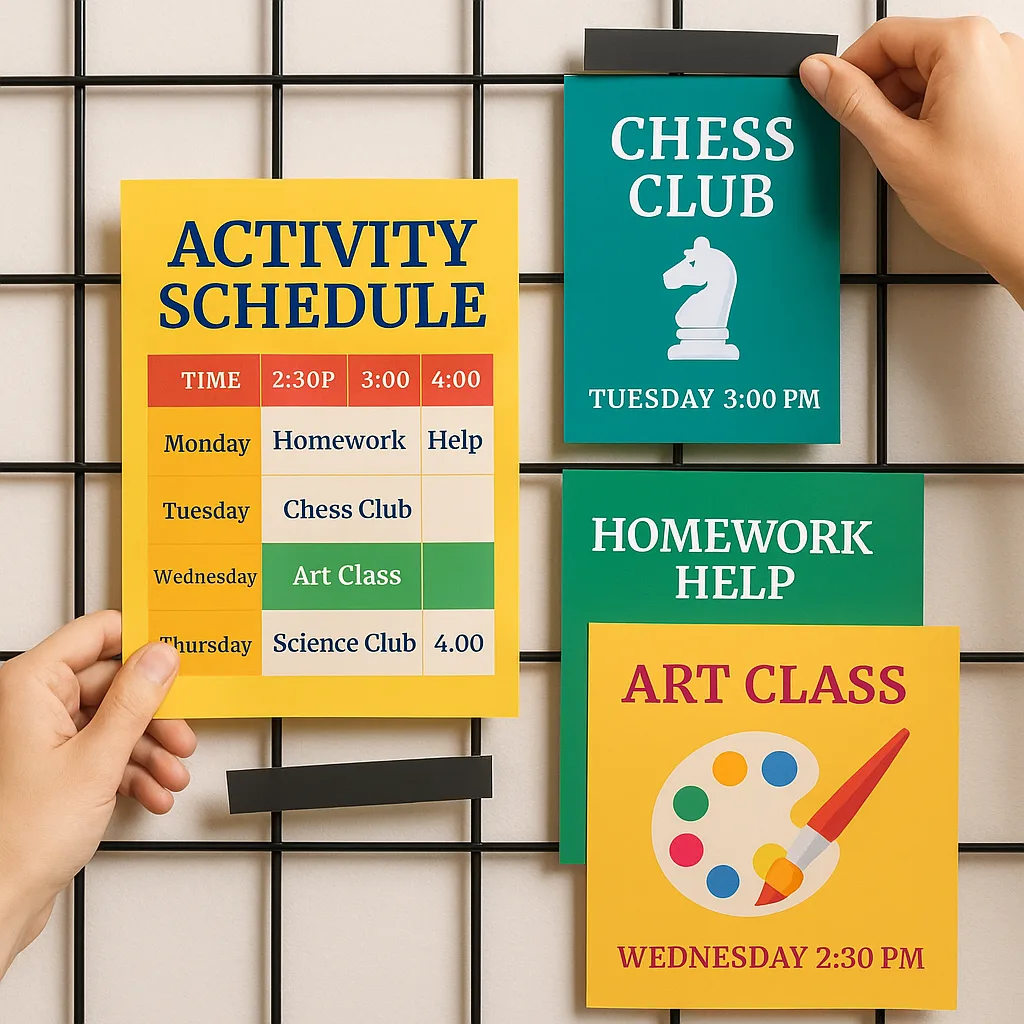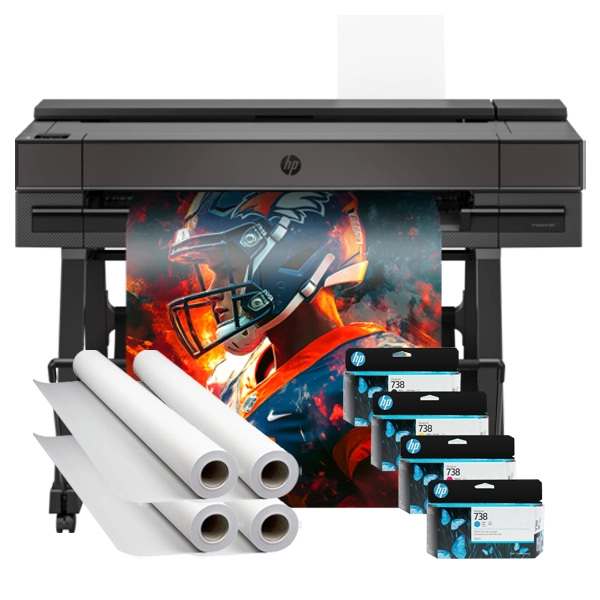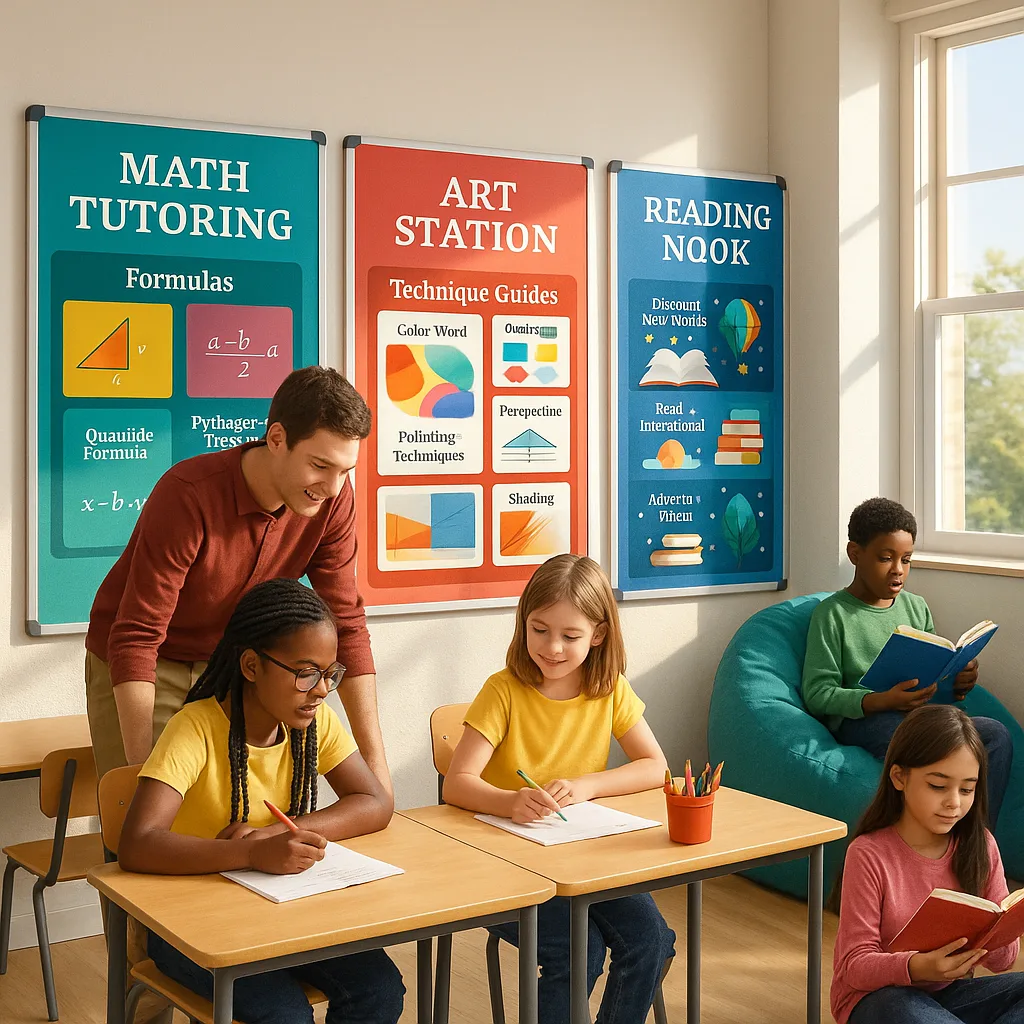Poster Machine for After-School Programs – Transform Spaces
After-school programs face unique challenges when it comes to space management. One moment you’re hosting a chess club, and thirty minutes later, the same room needs to accommodate math tutoring. Creating visual systems that can quickly adapt to these changing needs isn’t just helpful—it’s essential for program success.
For instance, think about how a single classroom might serve five different purposes in one afternoon. First, it’s a homework help center at 3:00 PM. Then it transforms into a robotics club meeting space at 3:45 PM. By 4:30 PM, it becomes an art studio. Each transition requires different visual supports, instructions, and atmosphere. This is where strategic poster design and a quality poster maker printer become invaluable tools.
Furthermore, the right poster system can reduce transition time between activities from 15 minutes to just 5 minutes. When you design modular, interchangeable poster components, staff members can quickly reconfigure the space to match each activity’s needs. Therefore, students spend more time engaged in meaningful activities and less time waiting for room setup.

Understanding the Multi-Purpose Challenge
After-school coordinators often manage multiple programs with limited resources and space. Subsequently, they need visual systems that work as hard as they do. Traditional static posters fall short because they can’t adapt to changing program needs throughout the day.
Moreover, different activities require different visual supports. A STEM club needs formula references and project guidelines. Meanwhile, a creative writing workshop benefits from inspirational quotes and story structure diagrams. Art programs need color theory charts and technique demonstrations. Each activity demands its own visual environment.
Additionally, student age ranges in after-school programs vary widely. Elementary students in homework help need different visual cues than middle schoolers in coding club. Your poster system must accommodate these diverse developmental needs while maintaining professional appeal.

The Campus Pro 36 Advanced Package helps create professional activity posters
Designing Your Poster Machine for Schools Activity Hub System
Creating an effective modular poster system starts with understanding your space and program needs. First, assess your wall space and identify zones that can serve multiple purposes. North walls might display instructional content, while south walls showcase student work or schedules.
Next, consider implementing a grid system on your walls. Using measuring tape and painter’s tape, create a uniform grid where posters can be positioned consistently. This approach ensures visual harmony even when poster content changes frequently. Standard poster sizes from your poster machine for schools should align with this grid for professional results.
Furthermore, think about sight lines from different areas of the room. Posters viewed from student desks need different positioning than those meant for small group areas. Test visibility by sitting in various spots around the room before finalizing your layout plan.
Average time savings reported by schools using modular poster systems
Magnetic Backing: The Foundation of Flexibility
Magnetic backing systems revolutionize how after-school programs manage visual displays. Instead of damaging walls with tape or tacks, magnetic systems allow instant poster changes without leaving marks. This technology proves especially valuable in shared spaces or rented facilities.
Additionally, magnetic receptive sheets can transform any smooth wall into a dynamic display surface. These sheets install once and last for years, providing a reliable foundation for your modular poster system. When combined with magnetic strips on poster backs, you create a system that’s both secure and easily adjustable.
Moreover, consider creating “poster stations” using portable magnetic boards. These mobile units can move between rooms or create temporary activity zones within larger spaces. For example, a tutoring station might include reference posters, student progress charts, and scheduling information—all contained on one moveable magnetic board.
Interchangeable Components for Maximum Efficiency
The key to successful multi-purpose spaces lies in creating poster components that work together seamlessly. Start by designing a base template using your poster maker printer that includes consistent headers, borders, and color schemes. This creates visual continuity even as content changes.
Subsequently, develop category-specific inserts that slide into sleeve protectors or attach with magnetic corners. For instance, create sets for:
• Academic support (math formulas, writing tips, study strategies)
• Enrichment activities (art techniques, music theory, coding concepts)
• Behavioral expectations (club rules, safety guidelines, cleanup procedures)
• Scheduling information (daily rotations, special events, deadline reminders)
Furthermore, use clear protective sleeves to create reusable poster frames. These allow you to swap content while protecting your prints from daily wear. This proves especially useful for frequently updated information like homework assignments or competition brackets.
Implementation Strategies for Program Success
Successful implementation of a modular poster system requires careful planning and staff buy-in. Begin by involving after-school staff in the design process. Their daily experience with program transitions provides valuable insights into practical needs and potential challenges.
Next, create a poster inventory system that tracks which materials belong to each program. Color-coded storage bins or folders help staff quickly locate needed components. Label everything clearly, including storage locations and assembly instructions.
Additionally, develop quick-reference guides showing standard configurations for each activity type. These visual guides help substitute staff or volunteers maintain consistency even when regular coordinators are absent. Laminate these guides and store them with the poster supplies for easy access.
Training plays a crucial role in system success. Schedule brief training sessions demonstrating proper poster handling, magnetic attachment techniques, and storage procedures. Furthermore, create video tutorials staff can reference when needed. This investment in training pays dividends through increased efficiency and reduced poster damage.
Maximizing Your Poster Machine for Schools Activity Hub Investment
Your poster machine for schools represents a significant investment in program quality. Therefore, maximizing its potential through smart design choices ensures the best return on that investment. Start by standardizing poster dimensions across all programs to simplify storage and display systems.
Moreover, batch printing saves both time and money. Schedule regular printing sessions where coordinators submit designs for the upcoming month. This approach reduces equipment setup time and allows bulk supply ordering. The Amplify Poster Maker excels at high-volume printing while maintaining consistent quality.
Furthermore, consider creating poster templates for common needs. Design frameworks for schedules, rules, instructions, and announcements that coordinators can customize with program-specific content. This speeds design time while maintaining visual consistency across all after-school offerings.
Measuring Success and Continuous Improvement
Track the effectiveness of your modular poster system through regular assessment. Survey staff about setup times, ease of use, and any challenges they encounter. Their feedback helps identify areas for improvement and celebrates successes.
Additionally, observe student responses to different poster configurations. Which layouts generate the most engagement? Do certain color schemes or design styles work better for specific age groups? Use these observations to refine your approach continuously.
Furthermore, document your system’s evolution through photos and notes. This creates a valuable resource for training new staff and demonstrates program development to administrators and parents. Consider creating a digital portfolio showcasing how your visual systems support diverse learning activities.
Monthly Review
Schedule regular check-ins to assess system effectivenessAction Items
• Survey staff satisfaction• Track setup time reductions
• Identify missing components
• Plan next month’s updates
Moving Forward with Your Activity Hub Vision
Creating a successful poster machine for schools activity hub system transforms how after-school programs operate. Moreover, the flexibility and professional appearance of well-designed modular posters elevate program quality while reducing staff stress. As you implement these strategies, remember that the best systems evolve through practice and feedback.
Your next steps should include assessing current space usage, identifying program needs, and planning your modular system layout. Subsequently, invest in quality printing equipment that can handle your volume needs while producing durable, professional results. The right poster maker printer becomes an essential tool for program success.
Furthermore, engage your entire after-school team in the planning process. Their buy-in and creative input ensure the system meets real-world needs while fostering ownership of the new approach. Schedule implementation in phases, allowing time for adjustment and refinement.
Finally, celebrate successes along the way. When setup time drops from 20 minutes to 5, acknowledge that achievement. Therefore, when students comment on how professional the space looks, share that feedback with your team. These victories build momentum for continuous improvement.

